Castles have an enduring mark on the historical landscape. From medieval strongholds to grandiose palaces, these stunning wonders have served as symbols of power and a crucial role in history. Some castles have been refurbished throughout the years, and some are still inhabited. Discover the oldest castles in the world and what makes them unique.
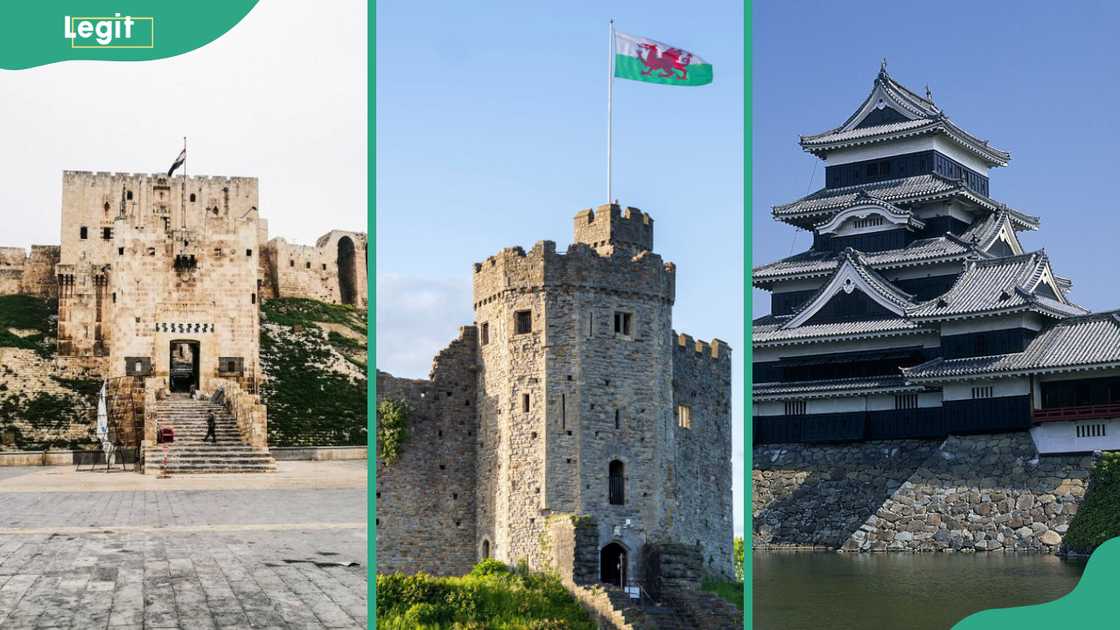
Source: Getty Images
TABLE OF CONTENTS
We determined the oldest castle in the world by analysing different castles and their establishment dates. We used data from various credible sources, like WorldAtlas, Revisiting History and Historical Royal Palaces. The list is arranged in ascending order.
15 oldest castles in the world
Castles are a staple in the history of the world and are primarily associated with royalty. Most of these grand architectural buildings still stand today in various parts of the world. If you are wondering which is the oldest castle in the world, here is a list of ancient wonders and the year they were founded.
| Rank | Castle | Year of establishment |
| 1 | Citadel of Aleppo | c.3000 BCE |
| 2 | Prague Castle | 880 |
| 3 | Reichsburg Cochem | 1000 |
| 4 | Warwick Castle | 1068 |
| 5 | Windsor Castle | 1070 |
| 6 | Hohenwerfen Castle | 1075 |
| 7 | Hohensalzburg Castle | 1077 |
| 8 | Tower of London | 1078 |
| 9 | Rochester Castle | 1087 |
| 10 | Cardiff Castle | 11th Century |
| 11 | Byblos Castle | 11th Century |
| 12 | Alcázar of Segovia | 1120 |
| 13 | Killyleagh Castle | 1180 |
| 14 | Malahide Castle | 1185 |
| 15 | Matsumoto Castle | 1504 |
15. Matsumoto Castle — 1504
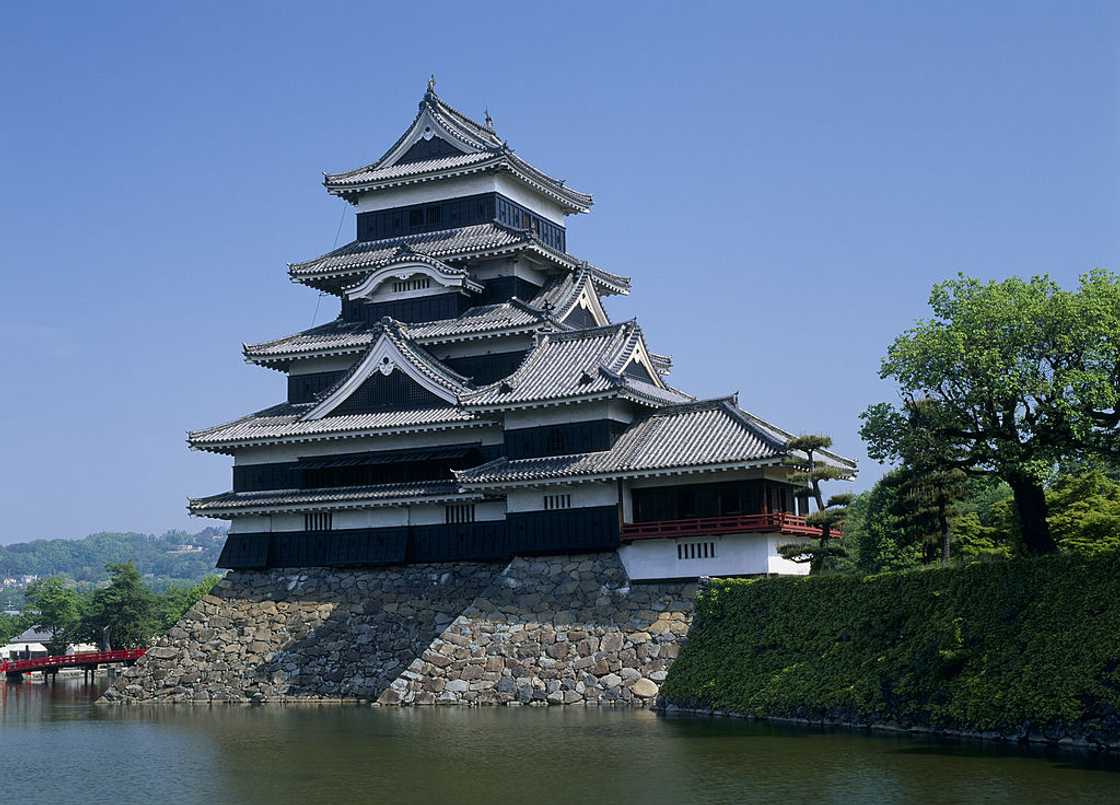
Source: Getty Images
- Built: 1504
- Built by: Shimadachi Sadanaga
- Location: Japan
- In use: 1504 to 1868
Matsumoto Castle, also known as Crow Castle or Fukashi Castle due to its black exterior, is among Japan's historic and few remaining castles. Shimadachi Sadanaga built the structure using Earth, wood, and stone.
The Matsumoto Castle is admired for its unique architecture and historical importance. This magnificent structure is open to tourists and is a popular spot to view cherry blossoms in spring.
14. Malahide Castle — 1185
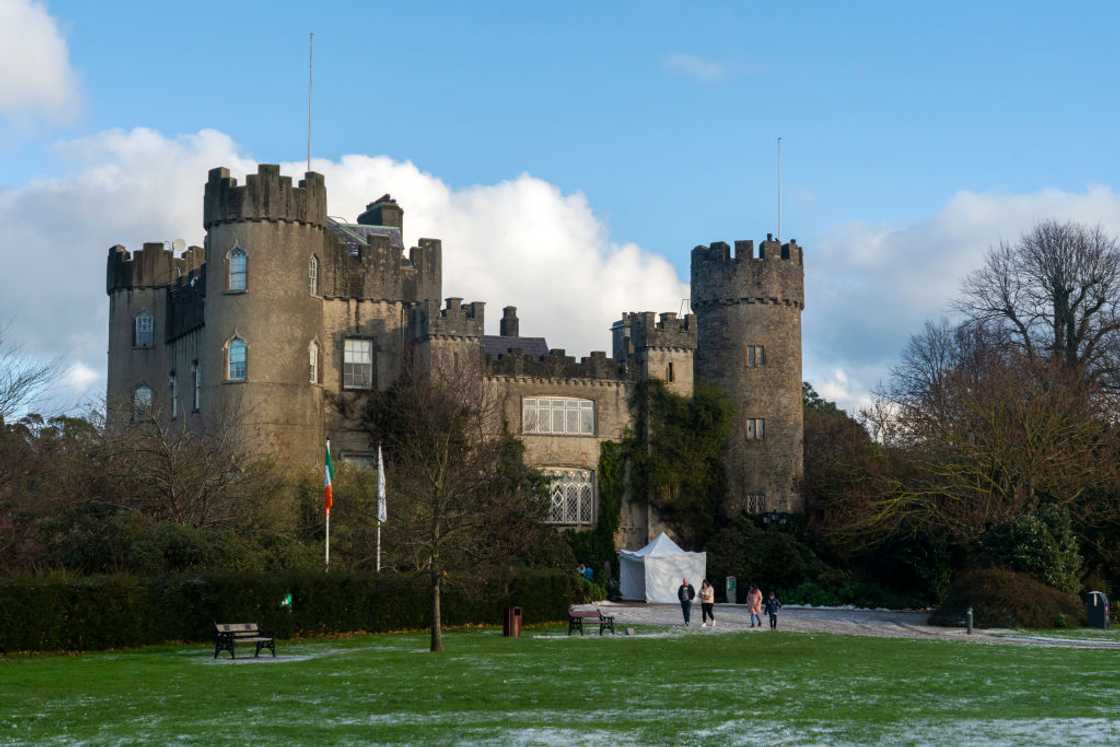
Source: Getty Images
- Built: 1185
- Built by: Richard Talbot
- Location: Ireland
- In use: 1185 to 1976
Malahide Castle is a stunning medieval castle in Dublin, Ireland. It has a rich history since its establishment in the 12th Century. The castle, which the Talbot family-owned, sits on 260 acres.
The Malahide Castle area includes a butterfly house and beautiful gardens. Visitors can take guided tours to explore its private rooms and learn about its Irish history.
13. Killyleagh Castle — 1180
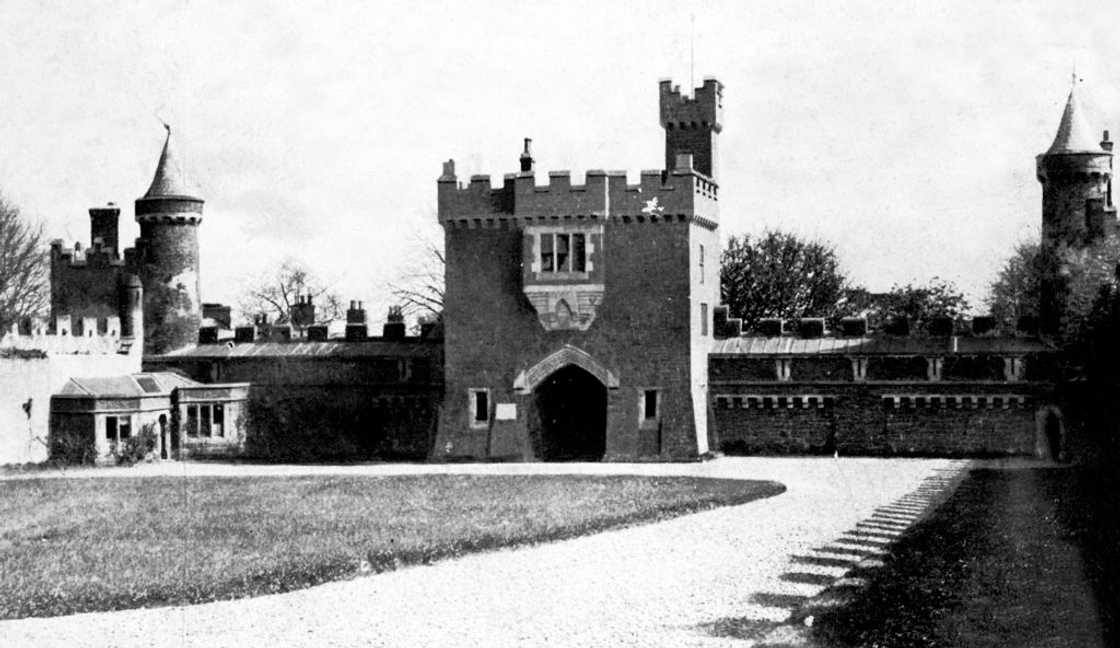
Source: Getty Images
- Built: 1180
- Built by: Norman knight Sir John de Courcy
- Location: Killyleagh, Northern Ireland
- In use: 1180 to present
Killyleagh Castle is one of the main attractions in Killyleagh, Northern Ireland. King James I gave the castle's land to the Hamilton family, who have lived there since the early 17th Century.
Gawn Rowan currently owns the castle. Killyleagh Castle was first built in 1180, and its architecture was inspired by the Loire Valley châteaux. Sir Charles Lanyon later redesigned it in the 19th Century.
12. Alcázar of Segovia — 1120
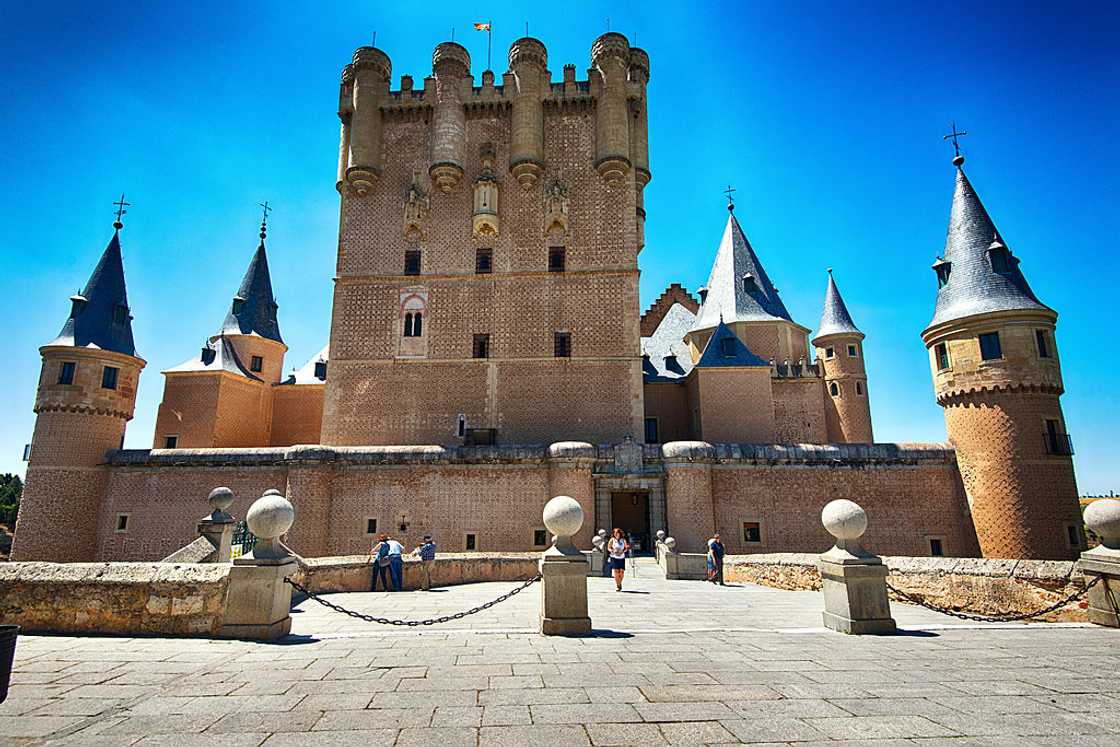
Source: Getty Images
- Built: 1120
- Built by: Berber Almoravid dynasty
- Location: Segovia, Spain
- In use: 12th century to 19th century
The Alcázar of Segovia is a magnificent medieval castle, originally an Arab fortress. It has played various roles over the years, including being a royal palace, a fortress, a military academy, and a state prison. It was home to the Castilian monarchs until the 19th Century.
In 1862, it caught fire and was handed over to the Ministry of War the next year as a military school to train military skills. Today, it serves as a museum and a military archives building, where visitors come to admire the historical site.
11. Byblos Castle — 11th Century
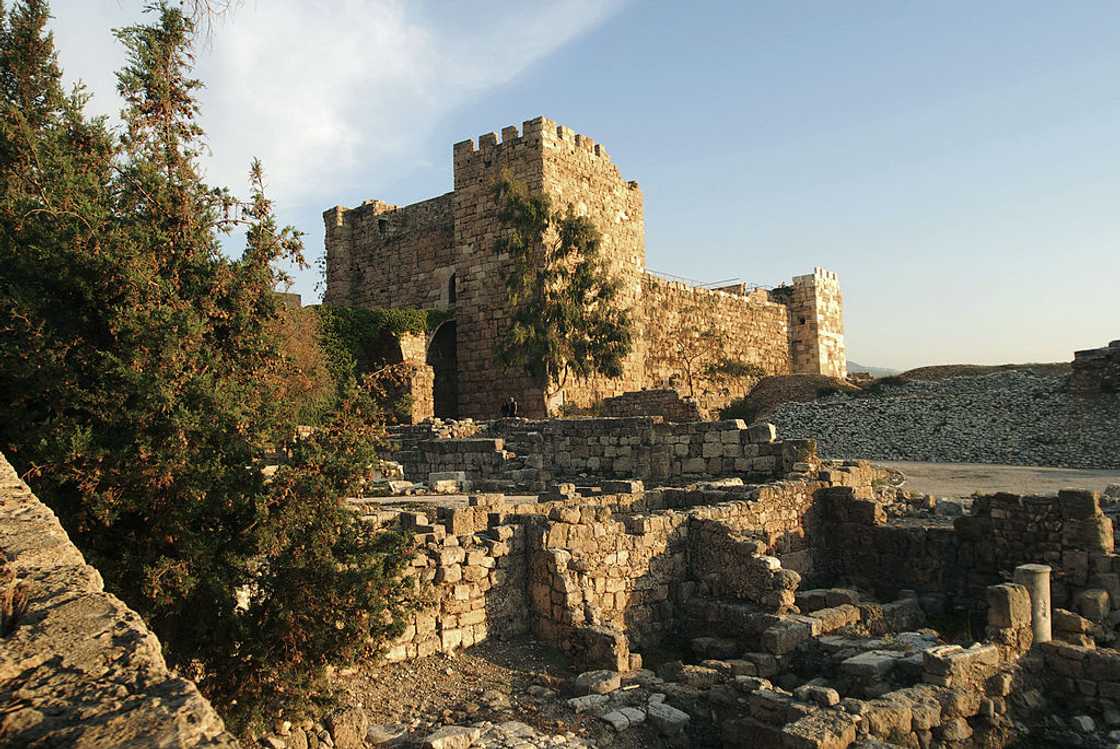
Source: Getty Images
- Built: 11th Century
- Built by: Crusaders
- Location: Byblos, Lebanon
- In use: 11th Century to 1282
Byblos Castle was also known as the Castle of Gibelet during the 11th-century Crusades. The Crusaders constructed this castle using limestone and remains of Roman structures.
The Byblos Castle is close to significant archaeological sites, such as the ruins of the Temple of Baalat Gebal and the Temple of the Obelisks. It was initially owned by the Genoese Embriaco family, among the Lords of Gibelet. Today, the castle is a museum that displays artefacts and is open to visitors.
10. Cardiff Castle — 11th Century
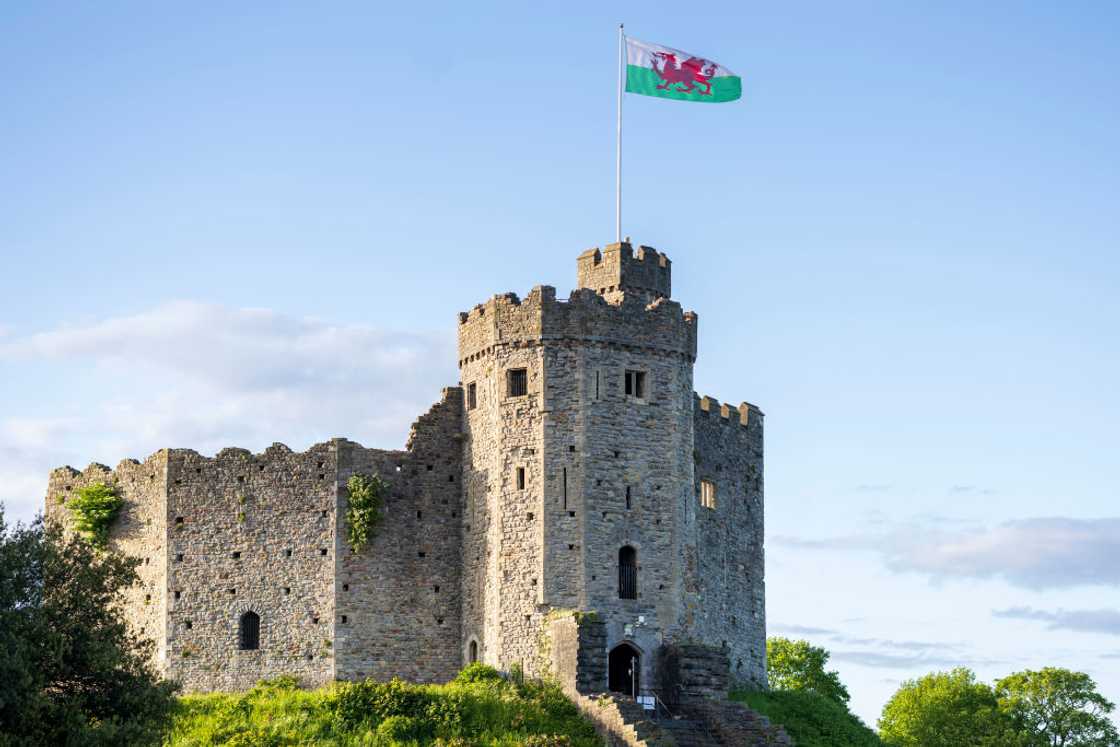
Source: Getty Images
- Built: 11th Century
- Built by: William the Conqueror
- Location: Cardiff, Wales
- In use: 11th Century to 1938
The castle is located in Cardiff, Wales, and was constructed using motte and bailey. It was first built by William the Conqueror and later improved by the Norman invaders. Over the years, Cardiff Castle has been refurbished and expanded. The transformations include a Norman keep and a Victorian Gothic mansion from the 19th Century.
9. Rochester Castle — 1087
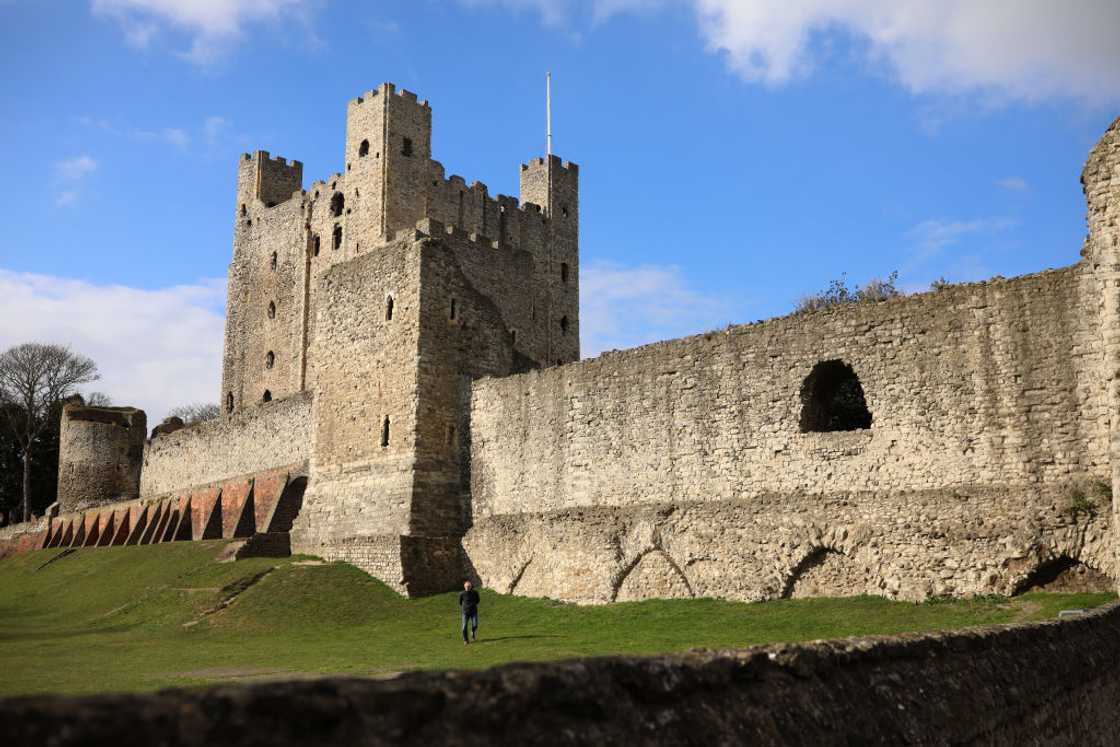
Source: Getty Images
- Built: 1087
- Built by: Gundulf, Bishop of Rochester
- Location: Rochester, Kent, South East England
- In use: 1087 to 16th Century
William II built Rochester Castle at the request of Gundulf, the Bishop of Rochester. William wanted the fortress built in Rochester, so he could control the river that passed through it. The English castle is one of the best-preserved castles in England and the tallest surviving historical building in Europe.
8. Tower of London — 1078
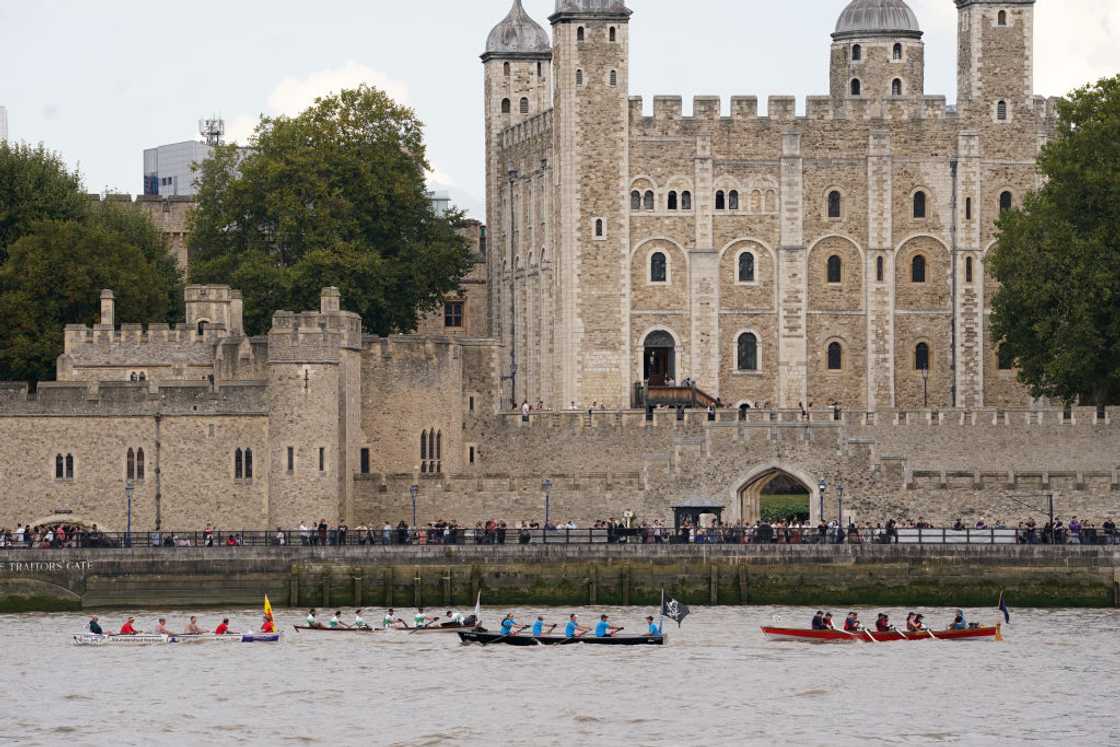
Source: Getty Images
- Built: 1078
- Built by: William the Conqueror
- Location: England
- In use: 1078 to 1952
The Tower of London Castle is a historic building on the River Thames bank in London, England. It is famous for being a prison, although that was not the original reason why it was built. The Tower of London was a royal residence with fortified walls and a moat. Today, it is a UNESCO World Heritage Site and home of the crown jewels.
7. Hohensalzburg Castle — 1077
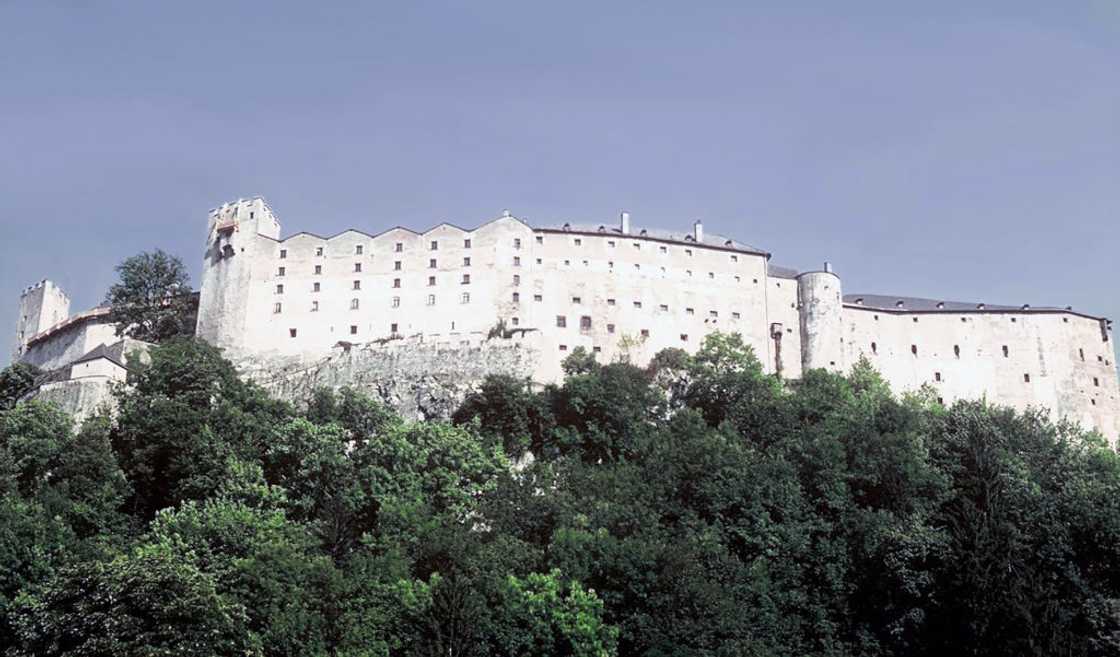
Source: Getty Images
- Built:1077
- Built by: Archbishop Gebhard
- Location: Salzburg, Austria
- In use: 1077 to 1861
Hohensalzbug was built by Gebhard I of Helffenstein in 1077. Although the archbishop went into exile, his successors finished the job. The archbishops of Salzburg expanded Hohensalzbug Castle during the reign of the Roman Empire, and Leonard von Keutschach made the final look.
6. Hohenwerfen Castle — 1075
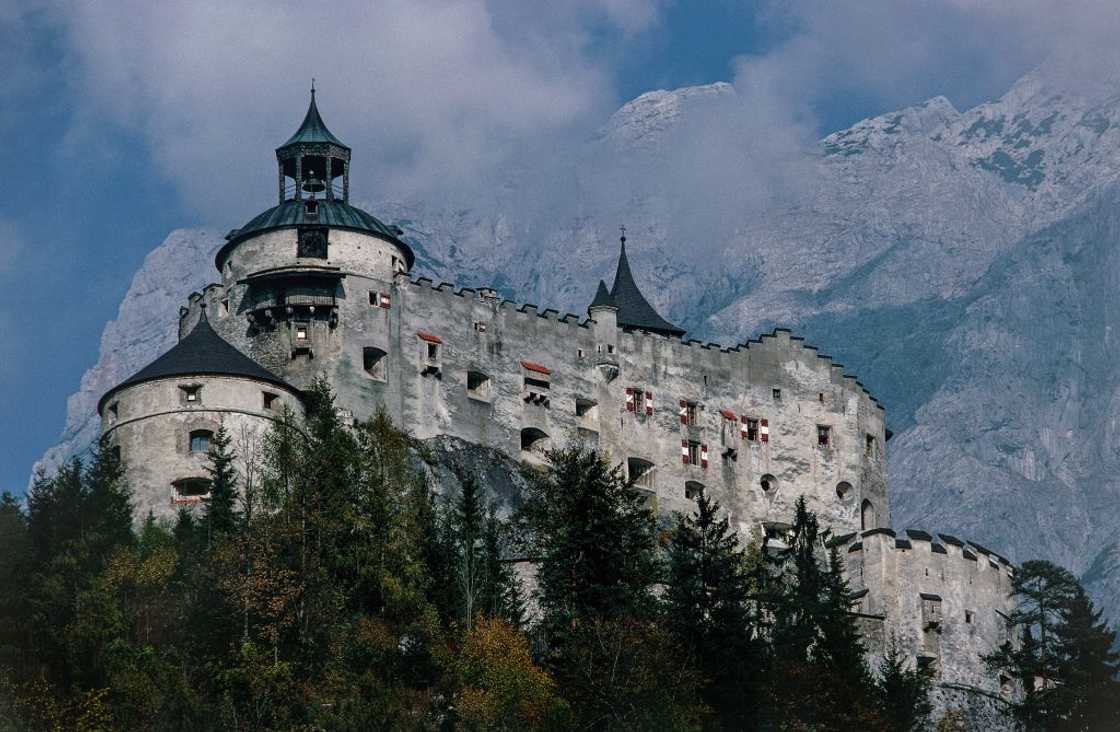
Source: Getty Images
- Built: 1075
- Built by: Archbishop Gebhard von Salzburg
- Location: Werfen, Austria
- In use: 1075 to 1987
Hohenwerfen Castle is a magnificent medieval building in the Salzach valley, south of Salzburg, Austria. The fortress sits on a 623-meter-high precipice and offers breathtaking views of the Tennen Mountain and Berchtesgaden Alps.
Built by Archbishop Gebhard of Salzburg, Hohenwerfen Castle is rich in Austrian history. It has served as a military base and a residence for Salzburg's rulers.
5. Windsor Castle — 1070
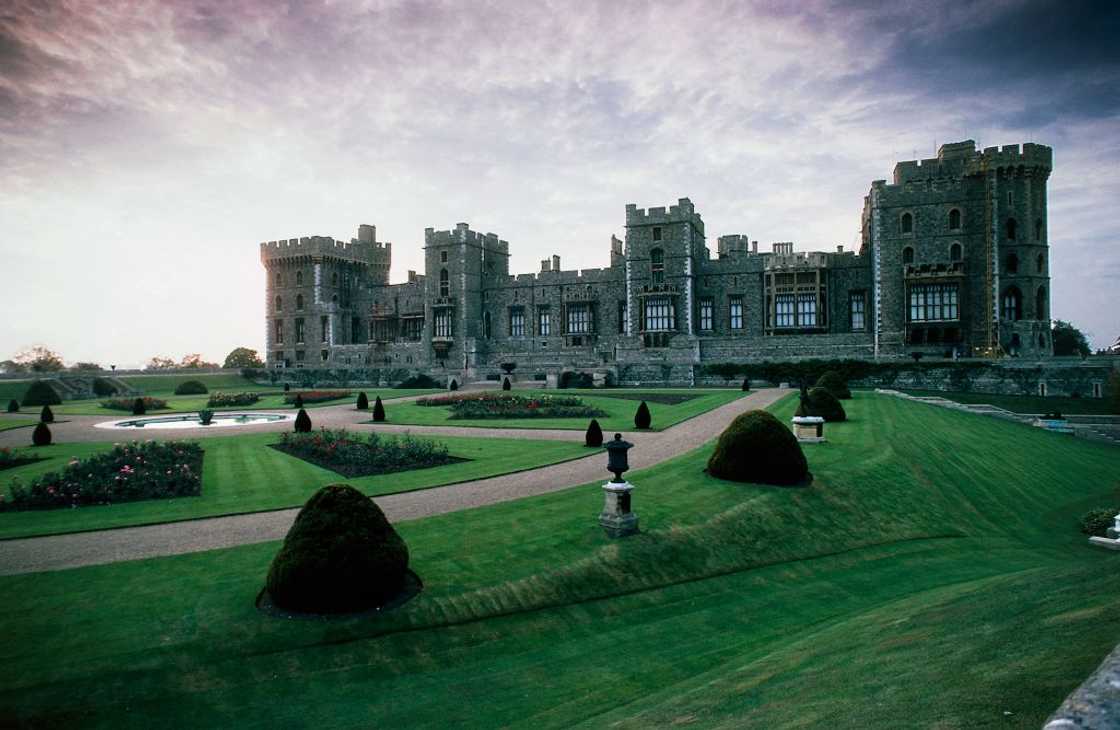
Source: Getty Images
- Built: 1070
- Built by: William the Conqueror
- Location: Windsor, Berkshire, England
- In use: 1070 to date
Windsor Castle is the most famous and longest-occupied palace in Europe. It has been home to England's monarchs since King Henry I.
The original Windsor Castle was initially built of motte and bailey but was later redone using stone. The fortress is still home to one of the most famous people, the English royals, and is also a tourist attraction.
4. Warwick Castle — 1068
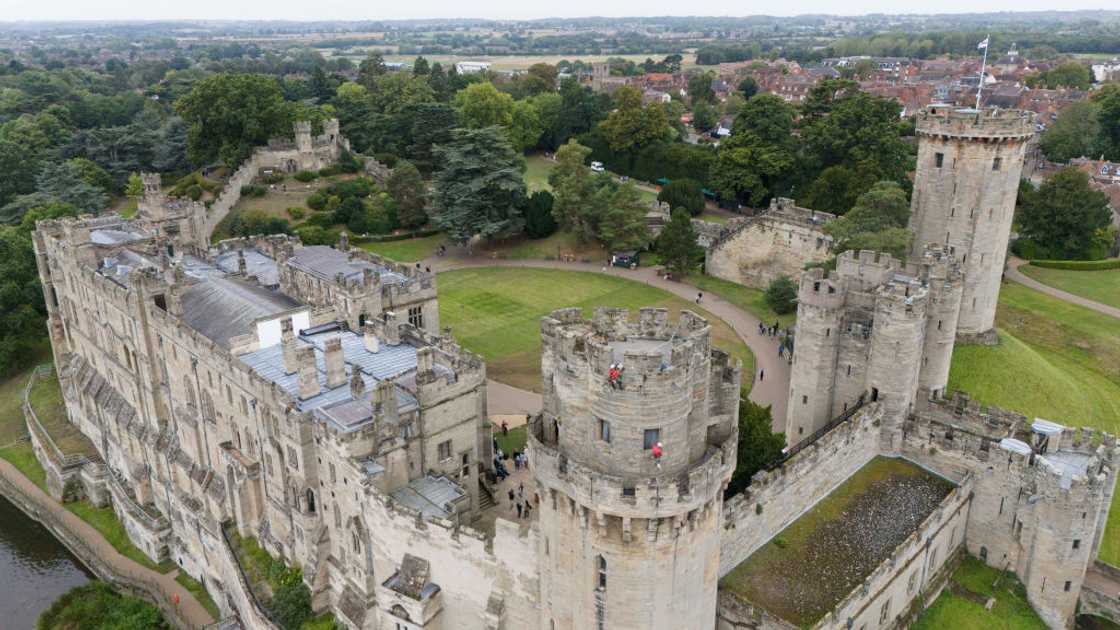
Source: Getty Images
- Built: 1068
- Built by: William I the Conqueror
- Location: Warwickshire, England
- In use: 1068 to 1978
The first stone of the fortress was laid in 1068 by one of the most famous leaders in England, William the Conqueror. Later, the Earls of Warwick gradually rebuilt it in stone, but it fell into negligence in the 16th Century. The Greville family owned the Warwick Castle for nearly four centuries and sold it in 1978.
3. Reichsburg Cochem — 1000
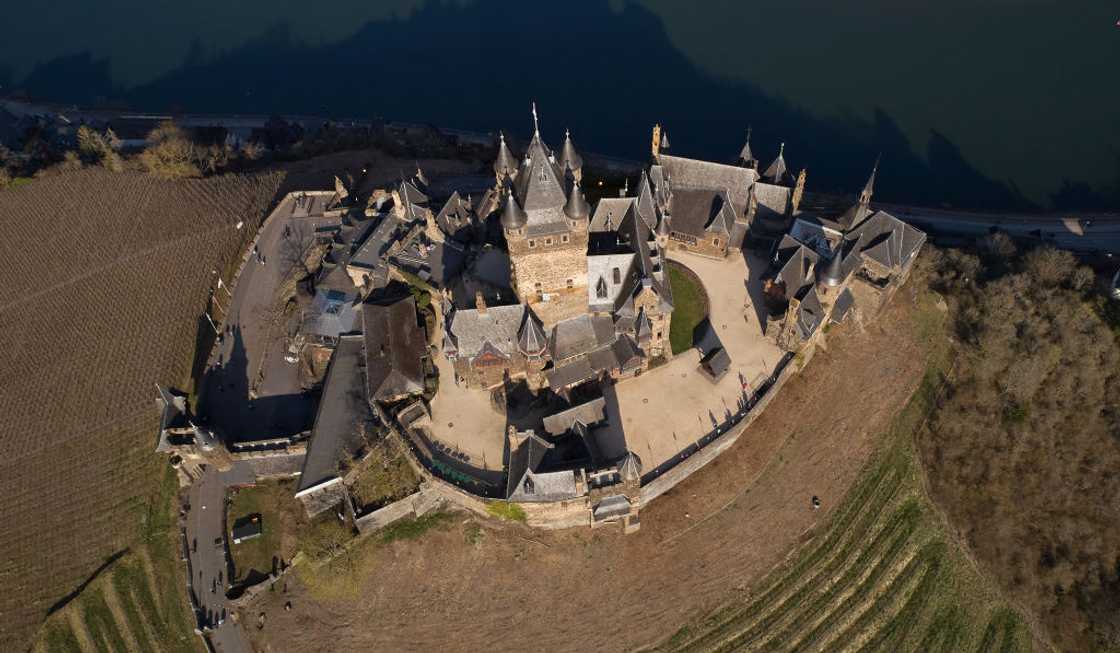
Source: Getty Images
- Built: 1000
- Built by: Franconian Palatine
- Location: Cochem, Germany
- In use: 1000 to 1689
Reichsburg Cochem, also known as Cochem Castle, was built by the Palatinate Count Ezzo in Germany. The earliest writings about the stunning building date back to 1051. Ezzo's oldest daughter, Richeza, the Queen of Poland, gifted Reichsburg Cochem to Palatine Count Henry I.
2. Prague Castle — 880
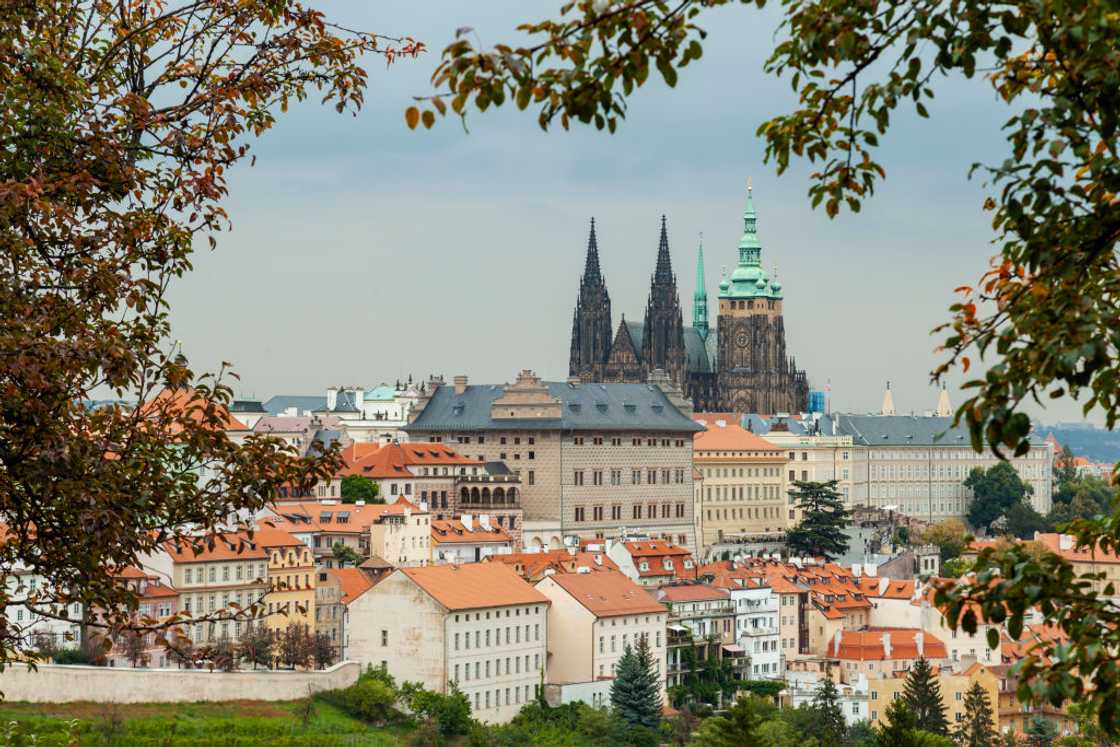
Source: Getty Images
- Built: 880
- Built by: Prince Bořivoj
- Location: Czech Republic
- In use: 880 to 1918
Prague Castle is a historic building situated in the heart of Prague, Czech Republic. It was founded by Prince Bořivoj of the Premyslid Dynasty around 880. The fortress is the Guinness World Record holder as the largest ancient castle complex covering nearly 70,000 square meters. It has also housed the richest families, such as the kings of Bohemia and Czechoslovakia presidents.
1. Citadel of Aleppo — c.3000 BCE
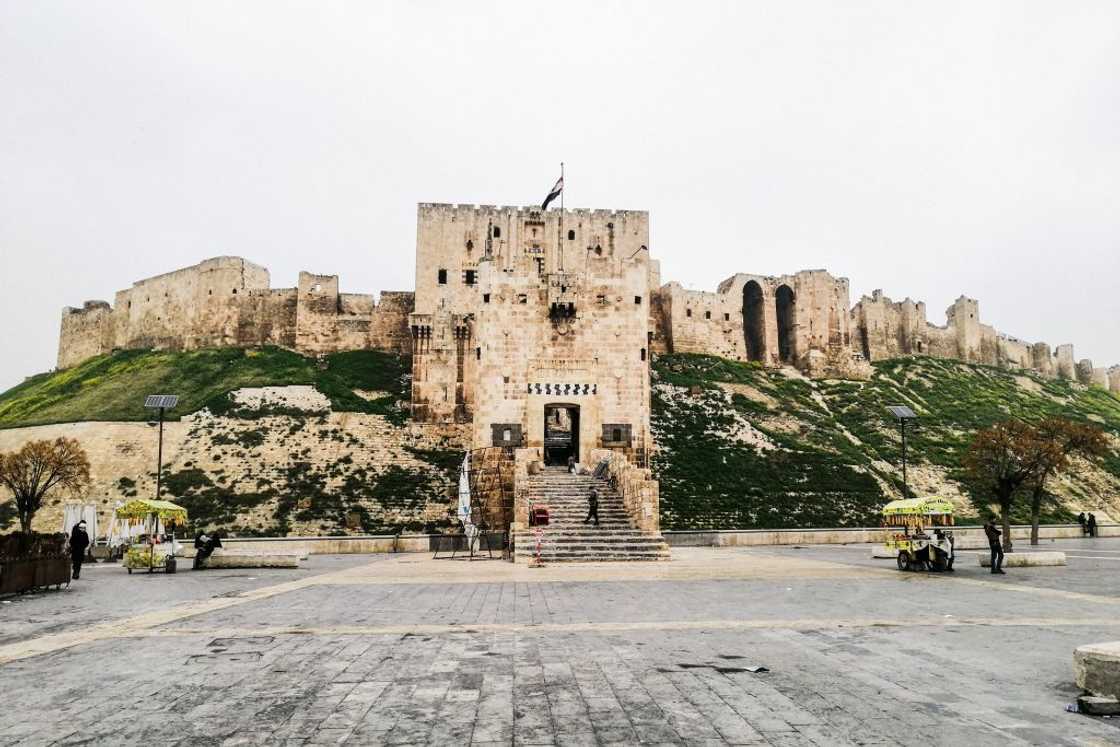
Source: Getty Images
- Built: c.3000 BCE
- Built by: The Ayyubids
- Location: Aleppo, Syria
- In use: c.3000 BCE to 21st century
The Citadel of Aleppo is the oldest fortress in the world and is also among the largest castles. It was built on a hill in Aleppo and was named a UNESCO World Heritage Site in 1986. The first fortress was built in 3000 BCE and rebuilt during the Ayuubid dynasty in the 12th Century.
What was the first castle built?
The Citadel of Aleppo, a towering testament to human ingenuity, is the world's oldest castle. The Ayyubids built it in the ancient city of Aleppo in Syria.
Is Prague Castle the oldest castle in the world?
No, it is not the oldest castle in the world. However, it is definitely one of the oldest. It was built in the 9th Century.
Which are the oldest castles in Europe?
Europe is home to some of the oldest castles in the world. They include Prague Castle, Killyleagh, Alcázar of Segovia, and Windsor Castle.
Who owns the oldest castle in the world?
Windsor Castle in England is the oldest continuously inhabited castle in the world. It is the official residence of one of the wealthiest people and the reigning British monarch. The fortress has been in use since the 11th Century.
Castles are magnificent buildings. Many of them were built in medieval times to protect against enemies. The oldest castle in the world is the Citadel of Aleppo, which was established in 3000 BCE in Aleppo, Syria.
Legit.ng recently published an article about African gods and goddesses. African people believe in different gods and goddesses. African mythology is filled with tales of these deities, who are believed to have created the world and its inhabitants.
African gods and goddesses are believed to have guided human lives since the beginning of time. The African deities have unique powers and are worshipped in various ways. Learn more about African gods and goddesses and their remarkable powers.
Source: Legit.ng








![[Just In] PH Refinery: Nigerians Deserve Clarity, Reduction In Petrol Prices – Peter Obi To NNPC](https://www.naijanews.com/wp-content/uploads/2024/10/jigawa4-768x576-1.jpeg)







 English (US) ·
English (US) ·